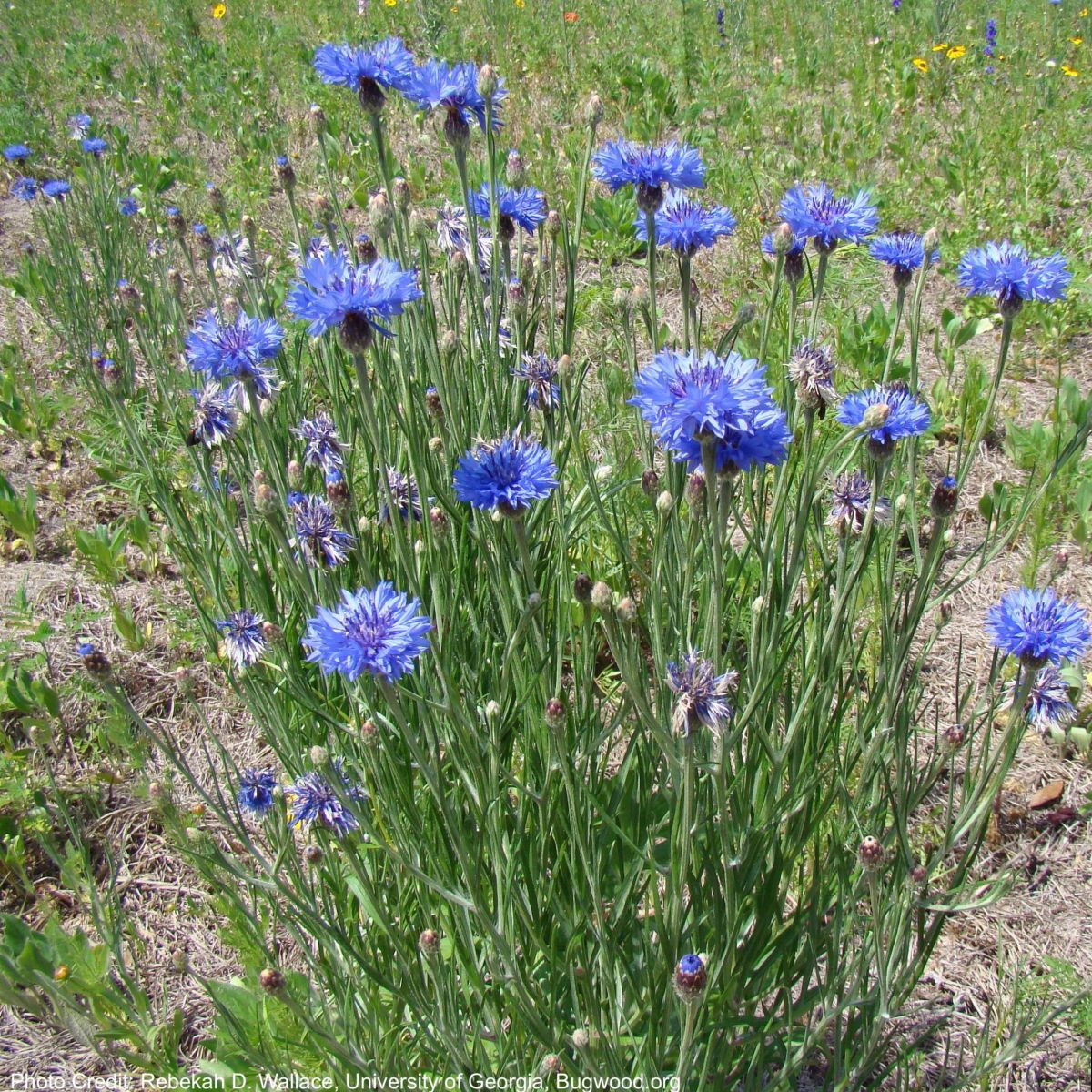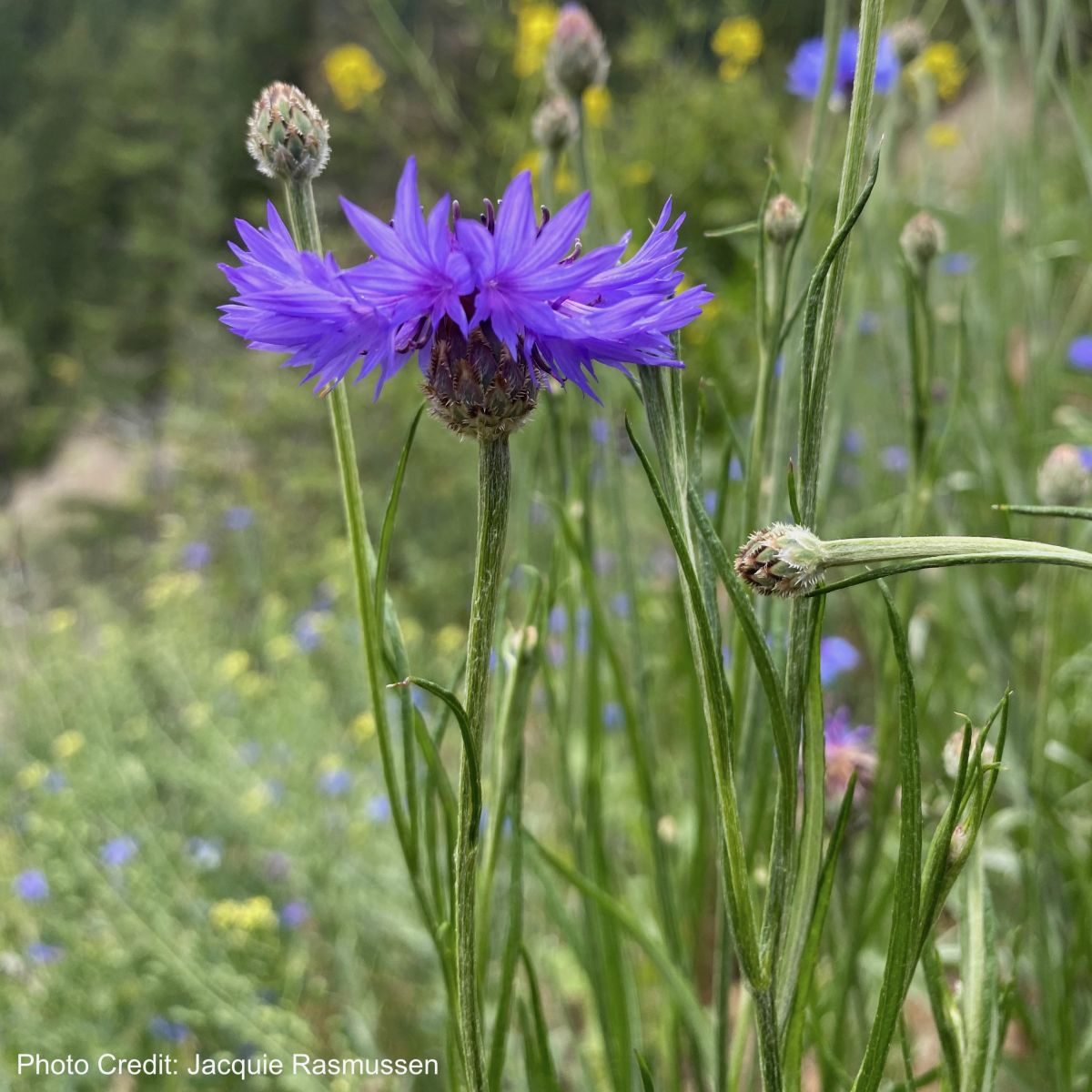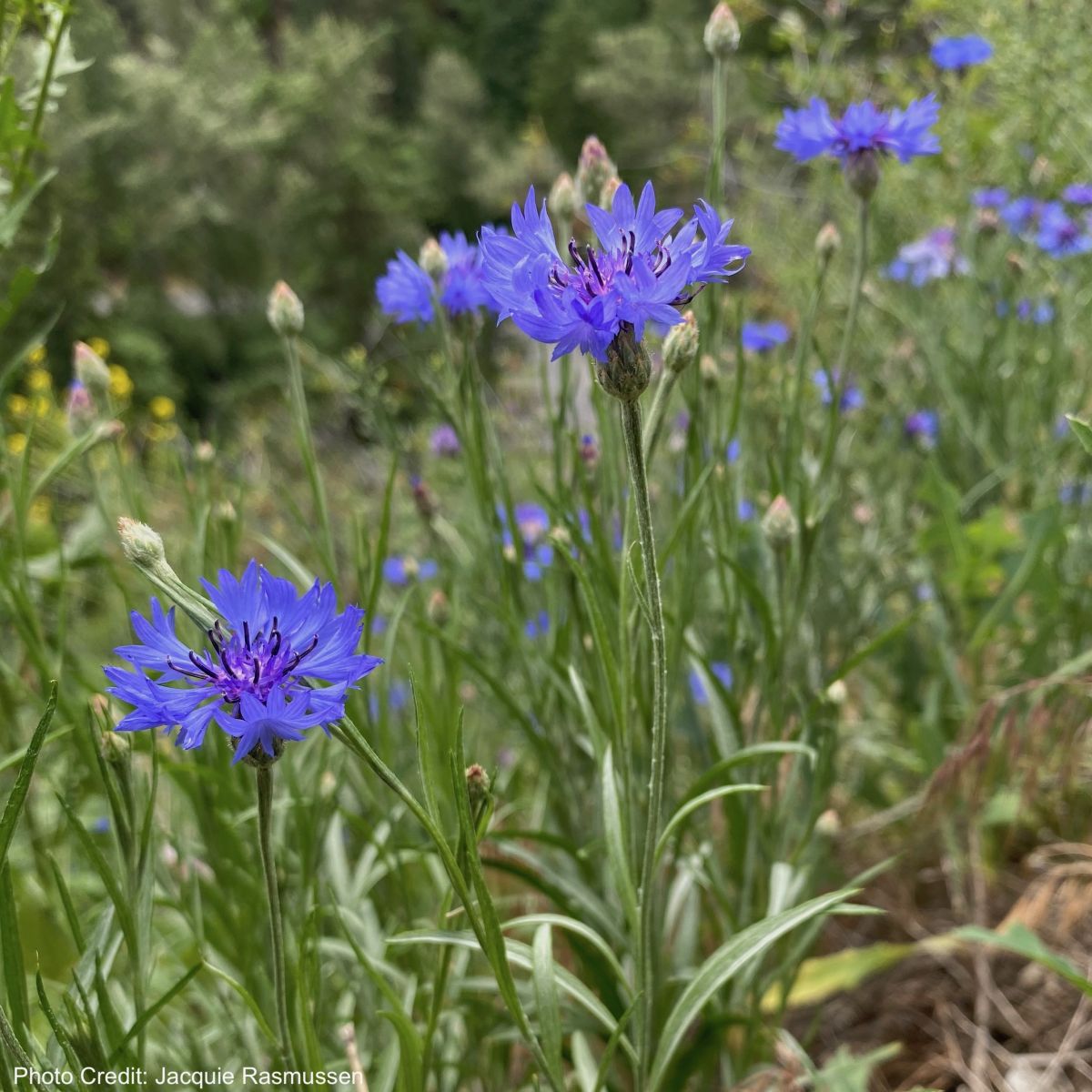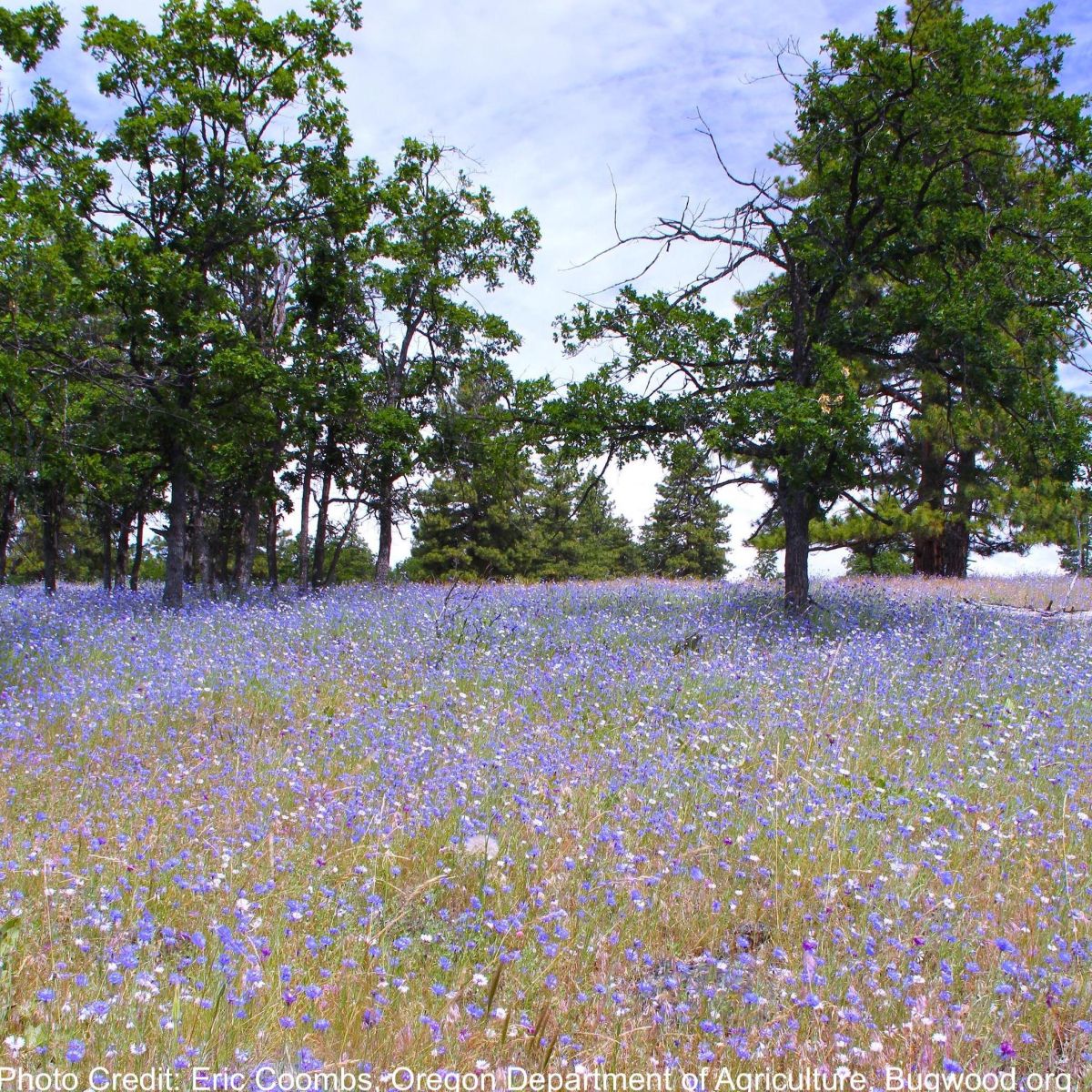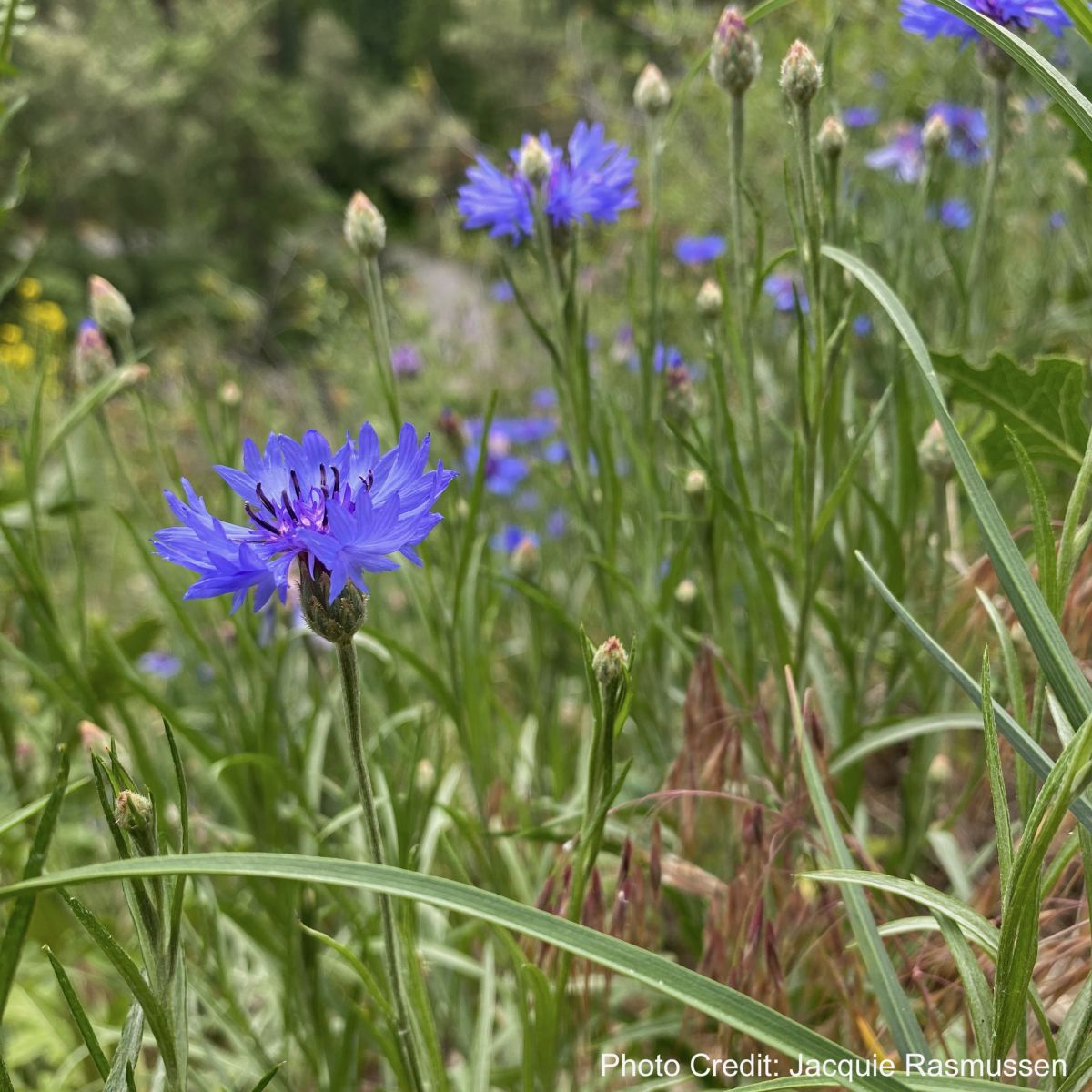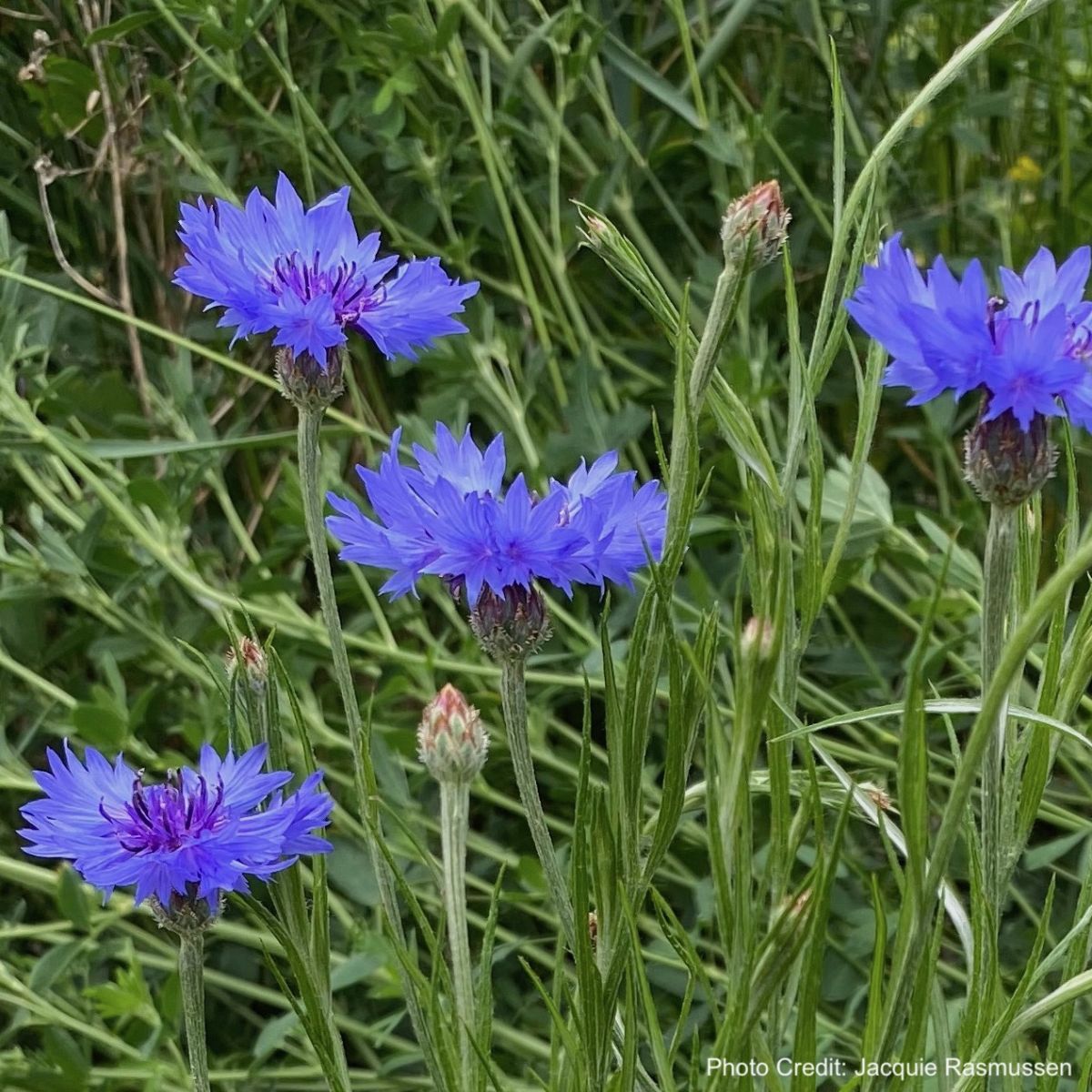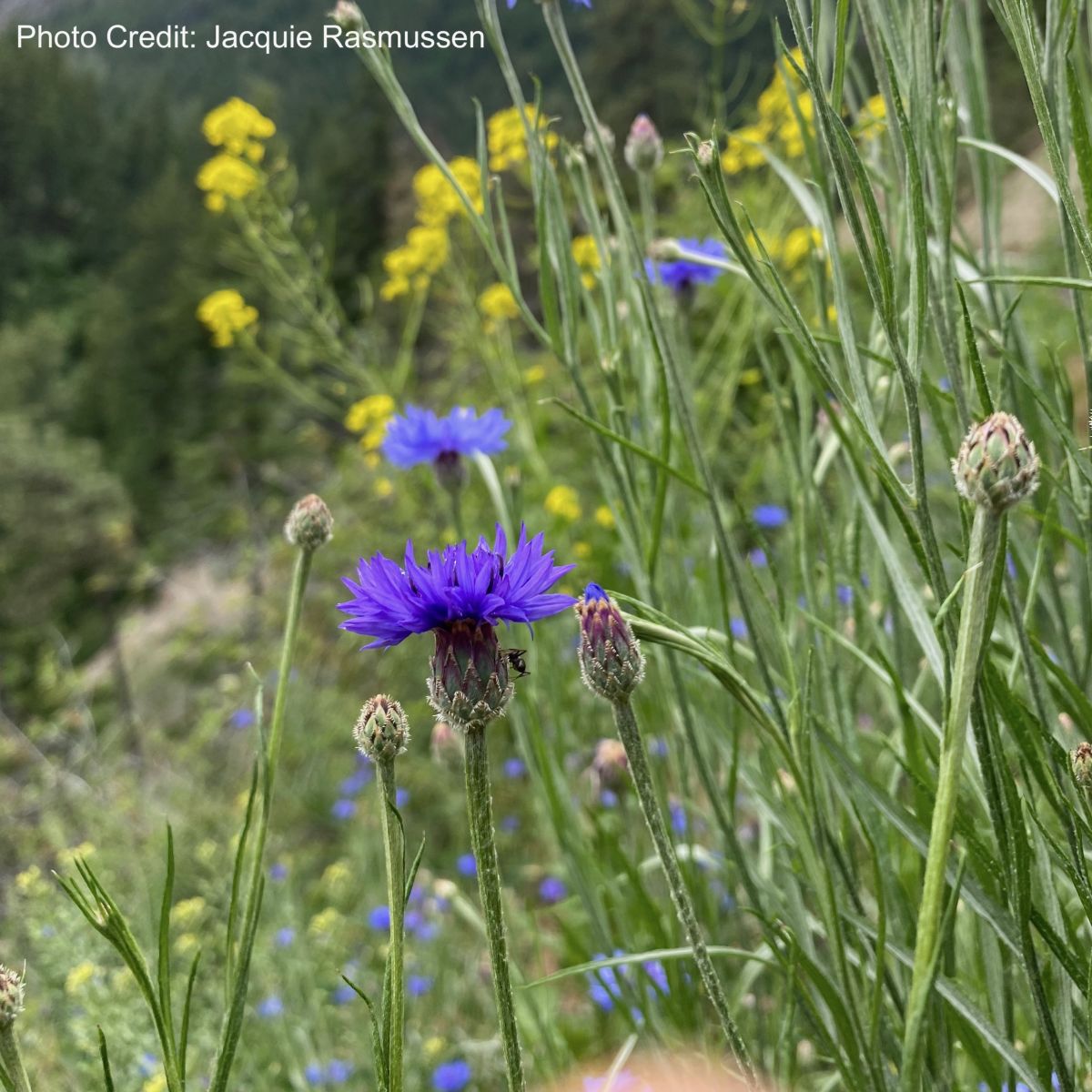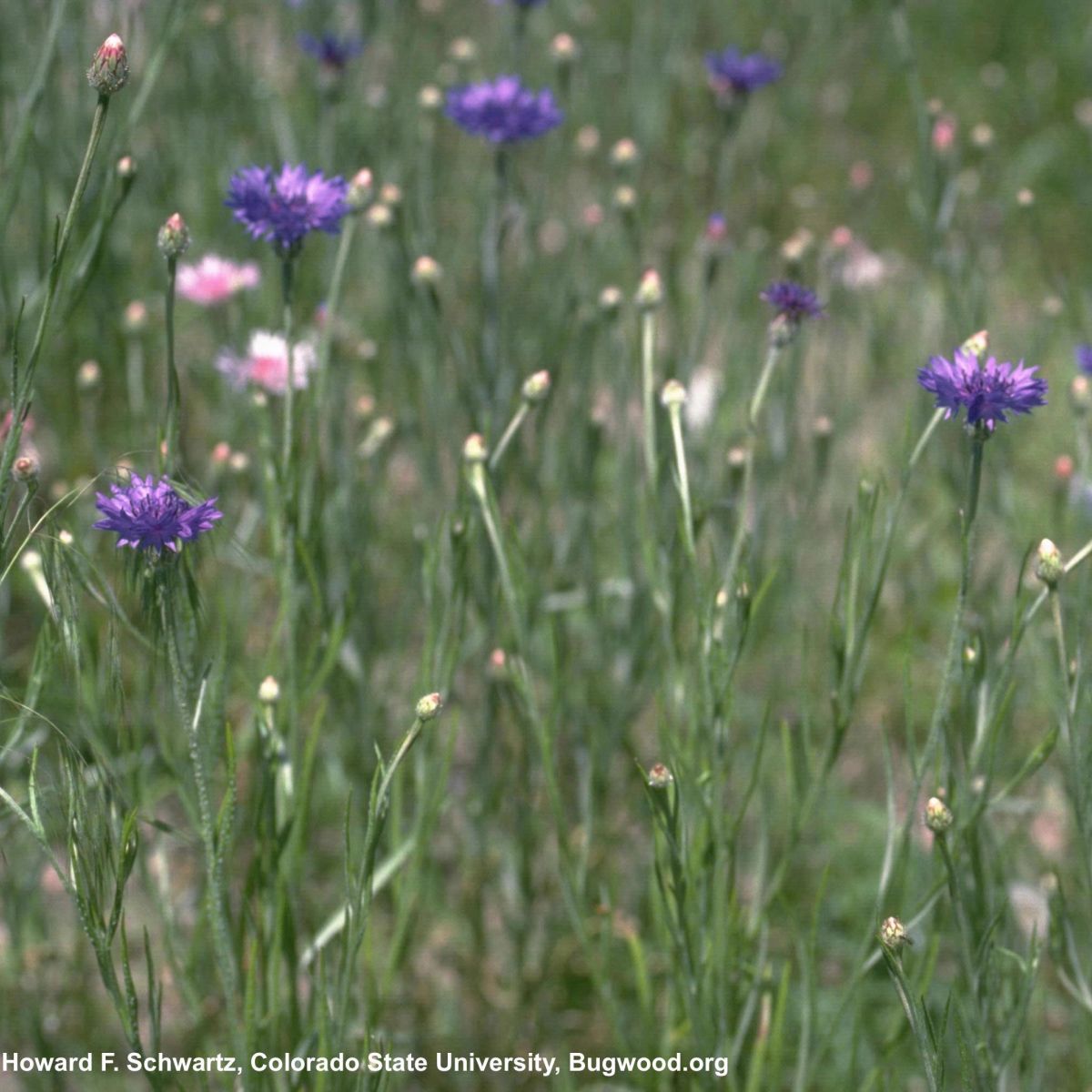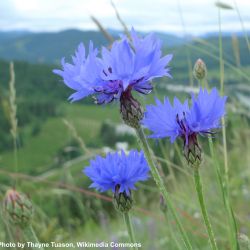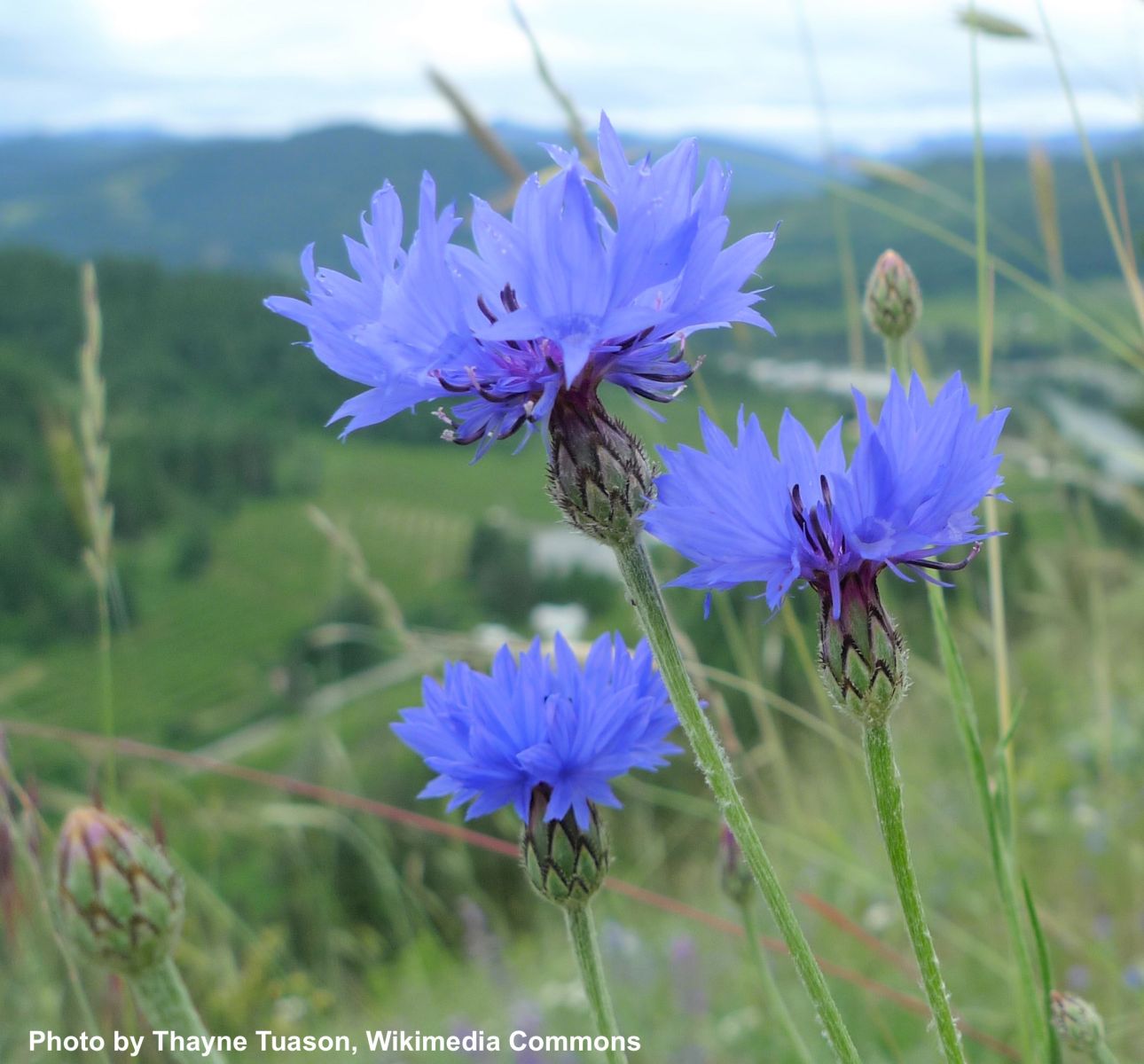
General: Annual herb from the Asteraceae family. Related to knapweeds.
Height: 0.2 - 1.2 meters
Flowers: Discoid (resembling a disc), usually blue, sometimes purple, pink, or white. Solitary, at the end of a branched stem. Peripheral flowers of the disc head are bell-shaped with 5 enlarged lobes. Central flowers of the disc head are a few mms shorter. Involucral bracts egg-shaped, grooved, with a darkened, tattered fringe at the tips.
Leaves/Stems: Stems grey-green, erect, branched, & loosely hairy. Basal leaves linear to lanceolate (lance-shaped), with sparse teeth & white-wooly below, soon deciduous (falling off). Stem leaves similar, reduced, & thinner upwards.
Root: Taproot
Cornflower
Garden Cornflower
Leucacantha cyanus
Bluebottle
Centaurée Bleuet
Perennial Cornflower (Centaurea montana) - also invasive and part of the knapweed family; has thinner & fewer ray flowers & thicker foliage.
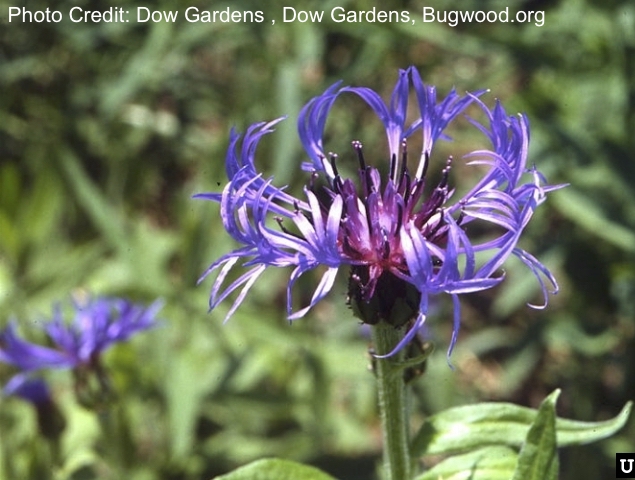
Chicory (Cichorium intybus) - also invasive; the ray flowers (which look like petals) are rectangular shaped with frayed edges.

Cupid’s Dart (Catananche caerulea)– non-invasive garden plant; ray flowers are rectangular-shaped with frayed edges.
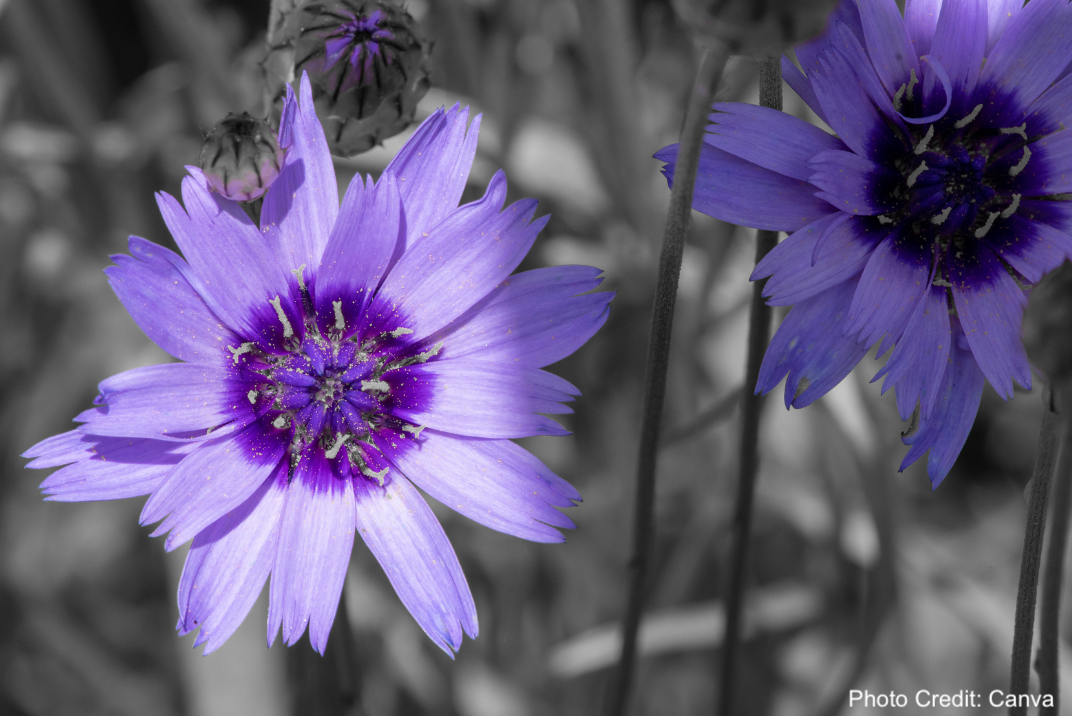
Showy Aster (Eurybia conspicua) - native; flowers look very different, similar to a daisy with yellow center & blue/violet ray flowers.
Image Link: Showy Aster, E-Flora
Where did it come from? Introduced from the Mediterranean region; an escaped garden ornamental.
Where does it grow here? Common along roadsides & in fields. Prefers dry, disturbed areas. Can grow in both the lowlands and the mountains.
Reproduction: Reproduces by seed. Plants produce many seeds, which germinate quickly so that the plant spreads aggressively.
When does it grow, flower & seed? Flowers May – July.
Spreads By: Spread by intentional planting as a garden ornamental. Often found in wildflower seed mixes. Also, often a seed contaminant in crop seeds. Further spready by wind, water, & birds.
Plant Type: Annual herb
- Outcompetes native vegetation in meadows & grasslands.
- Decreases biodiversity in ecosystems.
- Decreases water & nutrients available in the soil.
- Dense colonies invade farms & reduce crop yield.
- Seeds contaminate crop seeds.
- Prevent the spread. Do not buy or sow wildflower seeds that lack Latin names on the packaging. Do not park machinery in an infested field. If mowing, prevent spreading of root fragments by washing the machinery before moving to a new site.
- Review your property regularly for this species.
- Treatment – Hand-pulling is an effective way to control Bachelor’s Button, as long as the entire root system is removed. Remove small patches before it flowers & sets seed. Regular mowing can reduce weed progression. Material can be left on-site to decompose if the plant has not started to flower.
- Cover bare patches or disturbed soil by planting or seeding with non-invasives.
- Check areas where you have removed invasives for any new plants that year and in future growing seasons.
- Dispose of invasive plants responsibly. If Bachelor’s Button has begun to flower, all plant parts should be bagged & disposed of at the landfill. Composting and burning are not recommended once flowering.
- Contact LRISS for specific treatment recommendations.
E-Flora BC https://linnet.geog.ubc.ca
Sea to Sky Invasive Species Council https://ssisc.ca
Photo Gallery
